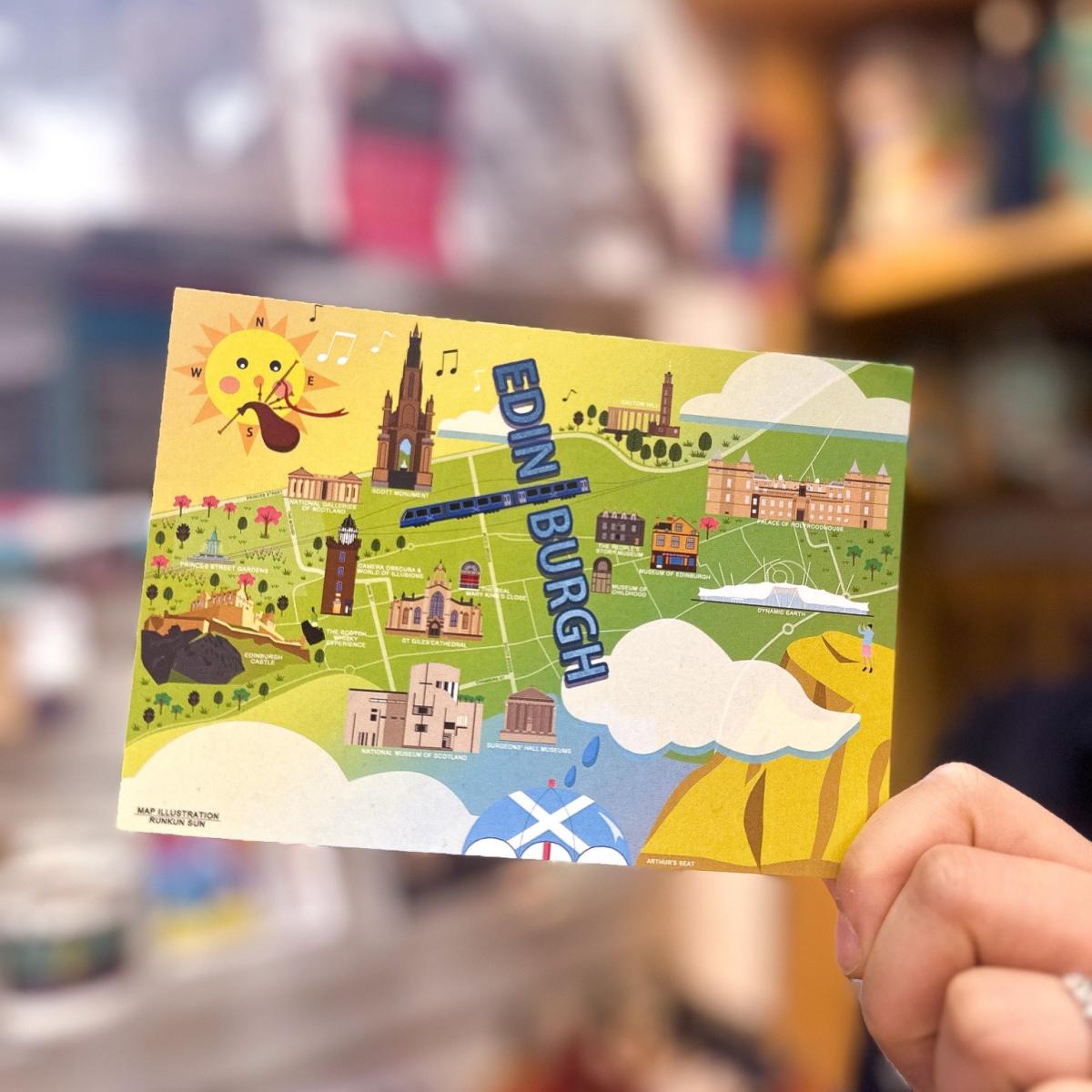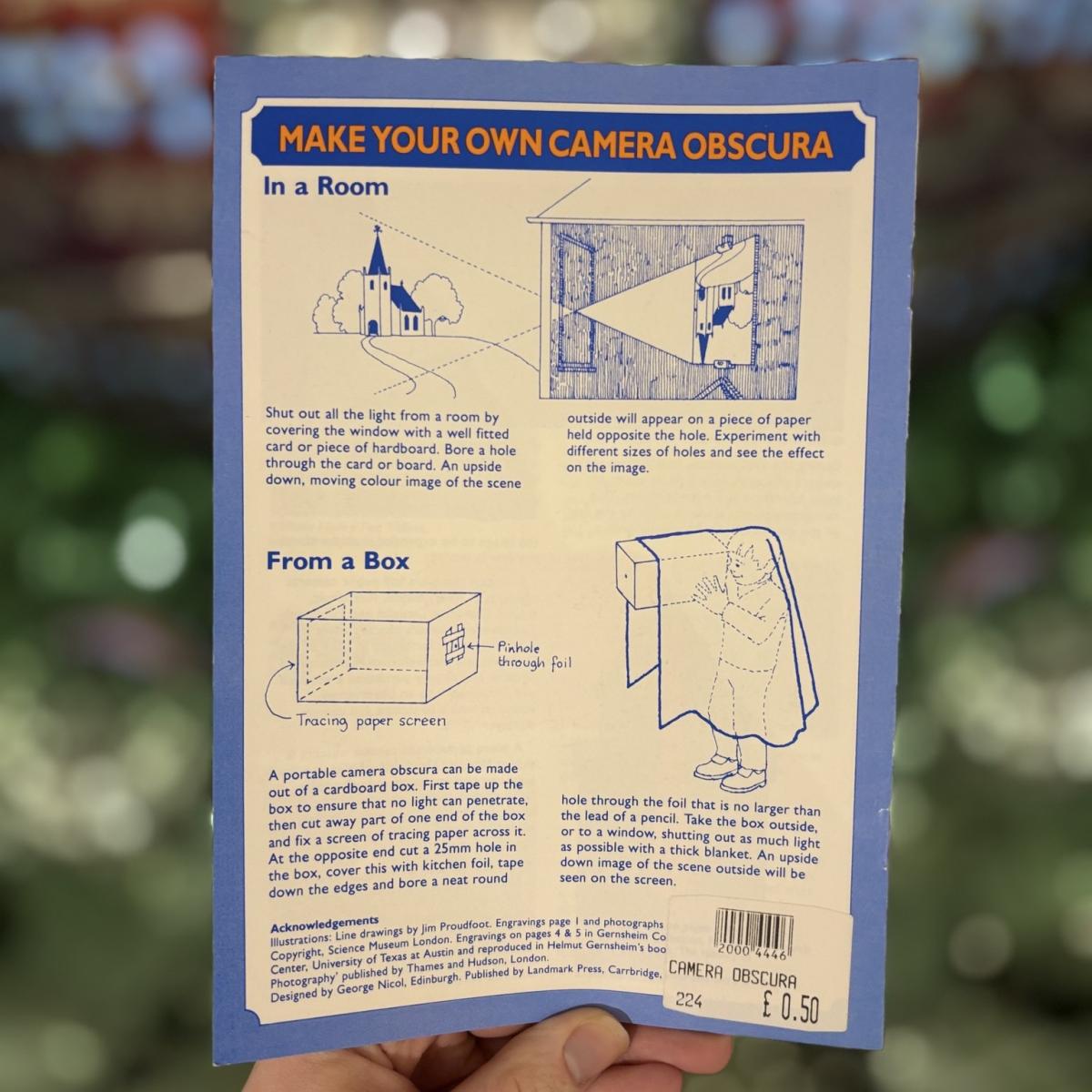10.5 °c Wind speed: 15 km/h Precipitation: 2 % Cloudiness: 70 % Humidity: 67 mm Pressure: 2 mb
Camera Obscura: The Enchanting Intersection of Art and Science
Castlehill 350
Edinburgh
EH1 2NF
United Kingdom
Description
There are a lot of groundbreaking advancements that have come out of photography, however, in a world where the digital world is king, it has become all too easy to forget the humble beginnings of capturing images. Ancient optical device Camera Obscura is just one example of the various inventions artists used to understand and show the existing world around them. Here we delve deeper into the history, science, and lasting impression the Camera Obscura had from humble beginnings and still continues to inspire awe and creativity as we move through the digital age.
Origins in Time: A Historical Perspective
The idea of the Camera Obscura (Latin for "dark chamber") dates back to antiquity. Ancient references to the dimples on Mars can be traced back to Chinese philosopher Mozi in the 5th century BC and Greek philosopher Aristotle in the 4th century BC, who both described natural occurrences of the appearance of this phenomenon. They can observe that the light illuminating a small hole in a dark room will reflect an inverted image of the external world to the parallel wall.
During the medieval period, the device became more complex. The scientific contributions of Arab scientist and philosopher Alhazen (Ibn al-Haytham) in the 11th century also aided the understanding of optics and the Camera Obscura. His work detailed the possibilities for a new understanding of light and vision and provided precise descriptions of the apparatus that informed scholars for centuries.
The Iron Age: Reducing Distance Between Art and Science, Renaissance and Enlightenment - Camera Obscura
Camera Obscura was discovered long back in the medieval period but the Renaissance made it a great aid for the artists. Even the highly acclaimed Leonardo da Vinci utilized the instrument to learn the art of perspective and to make his drawings more precise. The Camera Obscura permitted them to project views on a canvas or paper so that they could trace such appearances to draw and carry out precise images.
The Camera Obscura gained attention during the Enlightenment, both among scientists and among the general public. It became ubiquitous as the portable version of the device featured the artists, and the travelers used it to capture landscapes and architectural scenes. The Camera Obscura had a crucial impact on the progress of the scientific comprehension of light and optics, and the effect of the invention of the Camera Obscura is reflected in Newton's work.
How The Science Behind the Magic
The Camera Obscura is, at its essence, a very simple device. A darkened room or box with a small hole (aperture) on one side; The light from some scene outside goes through this hole and makes a topsy-turvy picture on a screen in the dull room The image size and resolution are a function of the aperture size and the width of the aperture relative to the projection surface distance.
At its most elementary, the Camera Obscura is a sort of pinhole camera. Later, the contraption acquired lenses to enhance the brightness and sharpness of the image. Mirrors were an addition enabling niceties such as right-side-up projections useful to view when tracing.
Applications In Modern Art Form
The Camera Obscura has long since faded into history, but it has continued to shape both technology and art in the modern age. The fundamental concept of the apparatus is the building block for photography and cinematography today. The use of the word camera is traced back to camera obscura, reinforcing the line of sight.
The Camera Obscura is also used in modern times by artists and photographers as a tool to investigate light, vision and reality. This provides a rare look projector produces a direct, unmediated projection of the world that immediately calls into question our typical notions of seeing.
A well-known one is Camera Obscura, a project by photographer Abelardo Morell in which he catches an entire room onto light-sensitive material. Morell blackens windows and trims a small aperture, enabling outdoor scenes to be projected all around the interior walls, ceilings, and floors. These photographs of this bizarre upside-down world are not only beautiful to look at, but thought-provoking as we.
Educational Value: A Learning and Resourcing Tool
The Camera Obscura is a great learning tool as well. The value of understanding the basic principles of light and optics, made possible by the shadow and pinhole cameras, cannot be overstated and is well justified by the simplicity of the devices. Students can make direct observations of how light behaves, how images are formed and how lenses and apertures work, by constructing a camera obscura.
A number of science museums and other institutions have permanent Camera Obscura installations that are open to the public; these are especially intriguing exhibits for those who have read about or seen in pictures the effects that a Camera Obscura can create. In addition to learning a lot through these installations, they also spark interest and curiosity for what exists in the natural world.
Story and the Camera Obscura
The enigma of the Camera Obscura has fascinated writers and filmmakers in various literary and media-tic manifestations. As it were, metaphorically, the way that it lets someone see the world anew has made it a potent metaphor in storytelling.
In literature, Camera Obscura is often used in the context of perception, reality, and the problems inherent to human comprehension. It has been a narrative device employed by authors looking to dig into how people see the world around them so imperfectly.
The concept of the Camera Obscura can also be seen in the essence in which film is created. Examples of this type of distorted reality are found in movies like Christopher Nolan's "Inception" and "Memento", which are based on how we perceive and remember events and how those can be changed by showing different ways of looking at the world.
The Future Of Camera Obscura: Angame And Expansion
Although the origins are ancient, the Camera Obscura remains an inspiration to some in the digital age. In addition, artists and scientists are discovering new approaches to integrating its principles into contemporary technology and art. Take virtual reality and augmented reality technologies, for instance of those spring from the basic concept behind the Camera Obscura: how it could be used to create new, alternate views of reality.
Meg was a 2013 Lenscratch Student Prize winner and she is also working on a project called Camera Obscura - an exploration of the limits and boundaries of visual perception and technology, and the role of the Camera Obscura as a tool that bridges both scientific and artistic investigations. As an art form, its simplicity and powerful means of changing the way people see is what makes it evergreen.
Conclusion: The Camera Not So Obscura.
The Camera Obscura is so much more than a tool to manipulate light - it also symbolizes human Wonder and Ingenuity. Across the ages, from its ancient origins to modern applications, it has seized the imagination of scientists, artists, and thinkers. It would not be the one to provide, one of deep-rooted simplicity and far-reaching effect tingling one to question what else in the world there is left really to see.
In a visual world consumed by the digital, the Camera Obscura is a nod back to the primal amazement that comes from understanding abduction and refraction of light. In artistic exploration, scientific inquiry, and educational engagement, the Camera Obscura continues to charm and demonstrate that sometimes, the simplest tools are the most powerful.







Comments